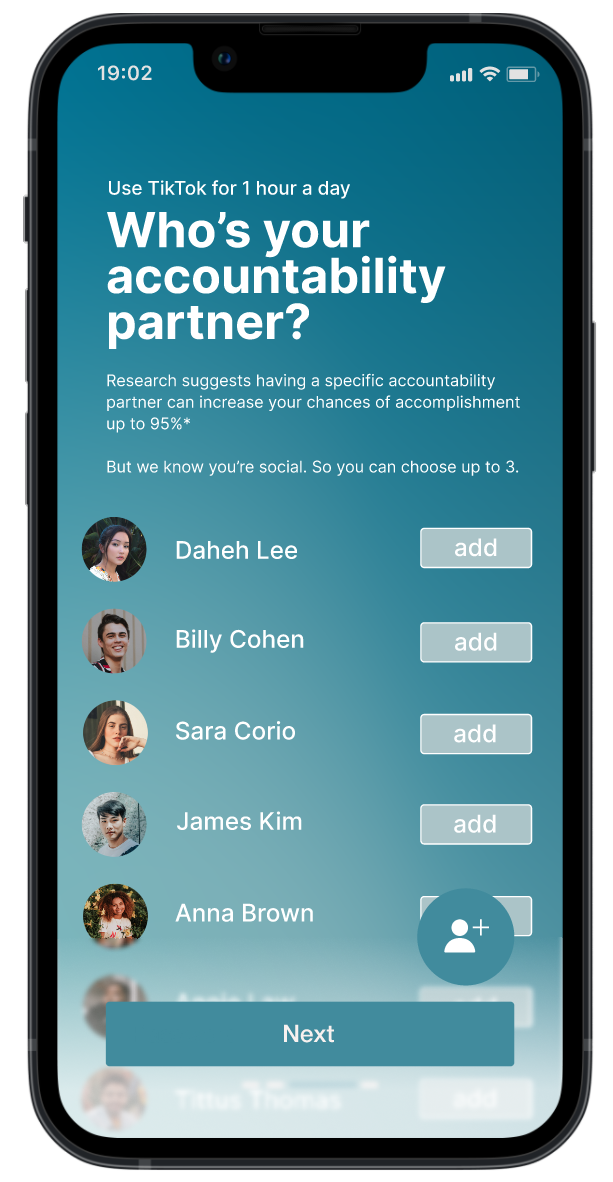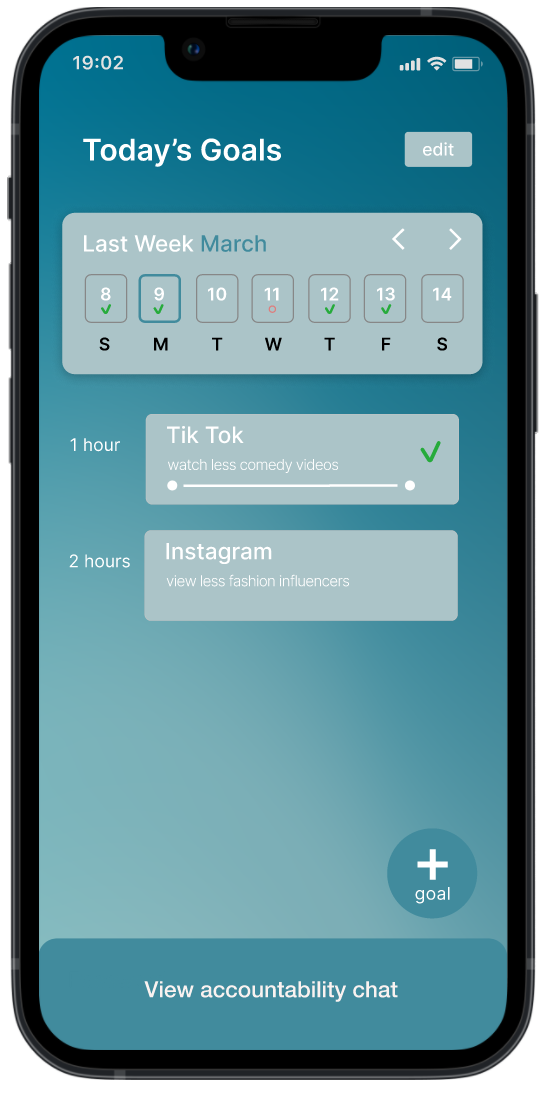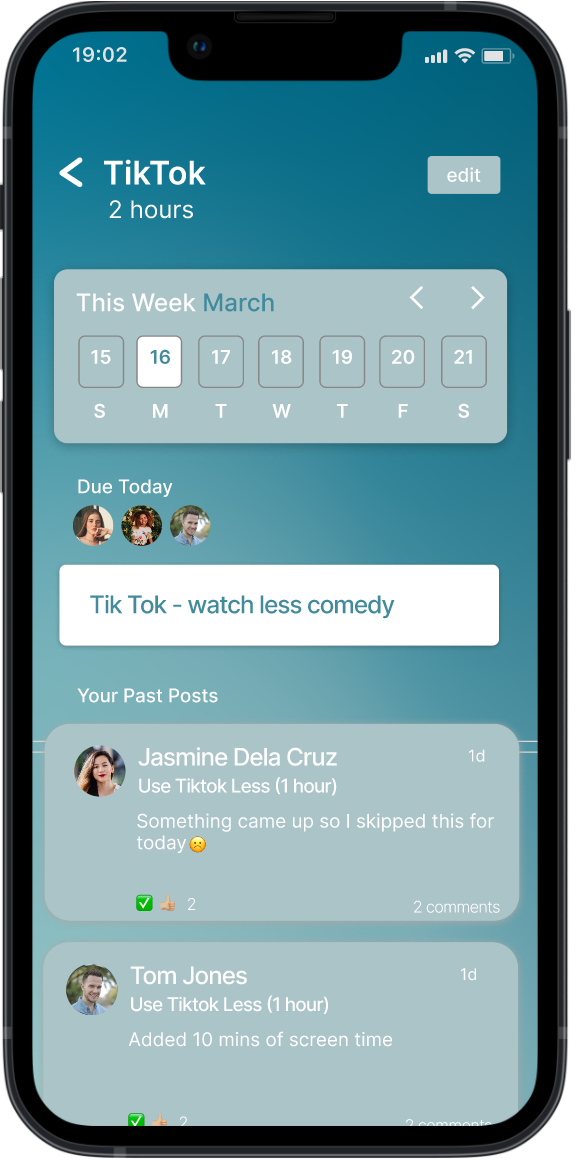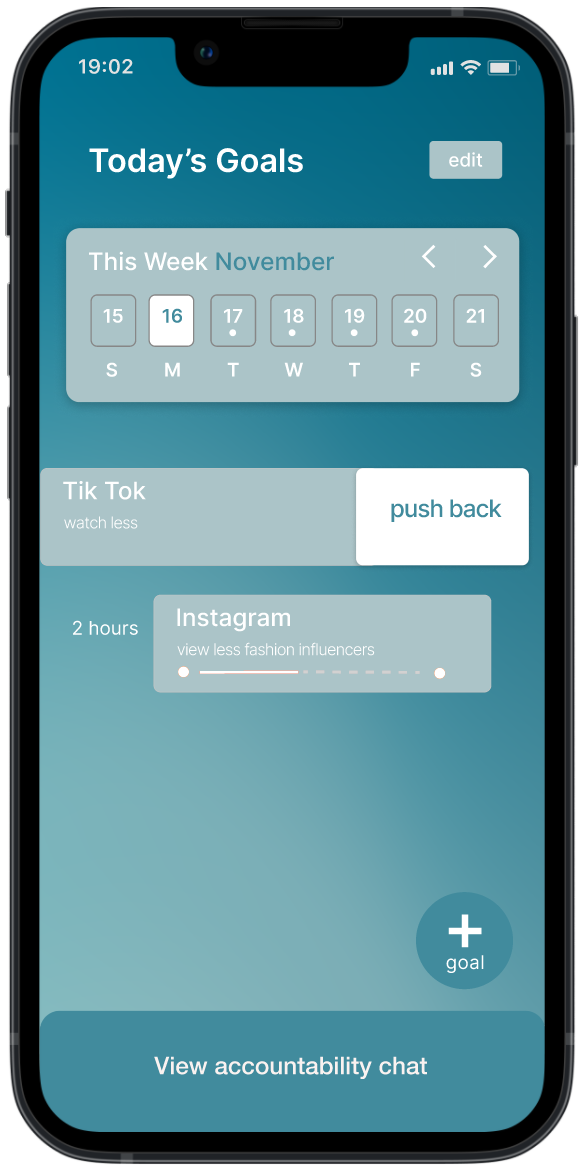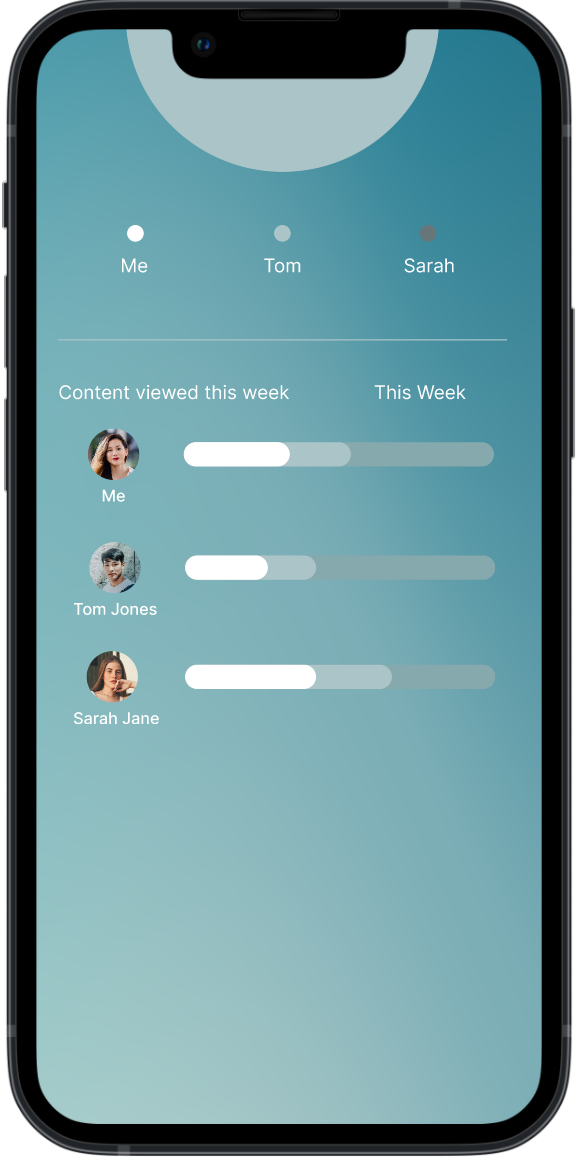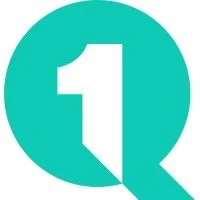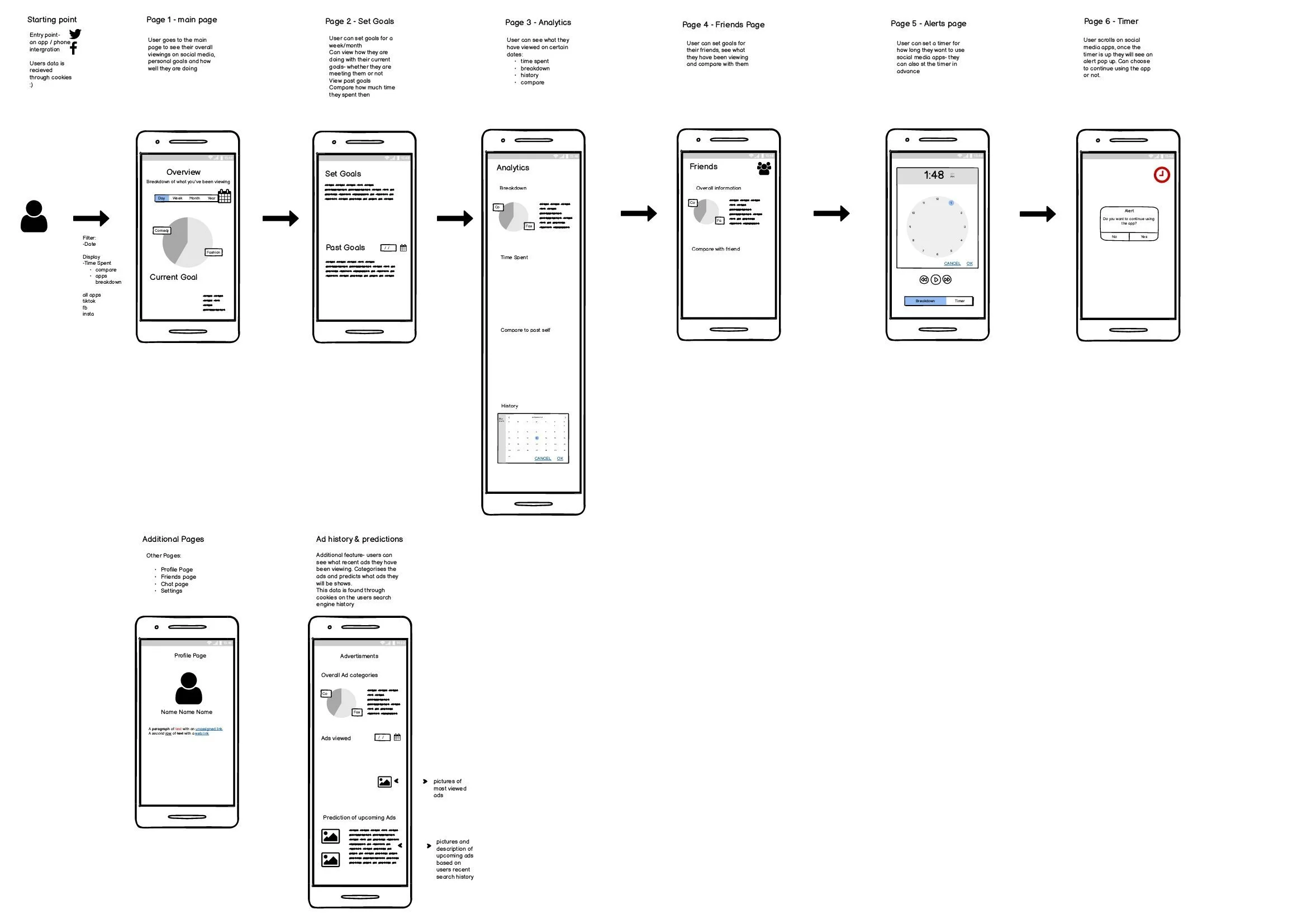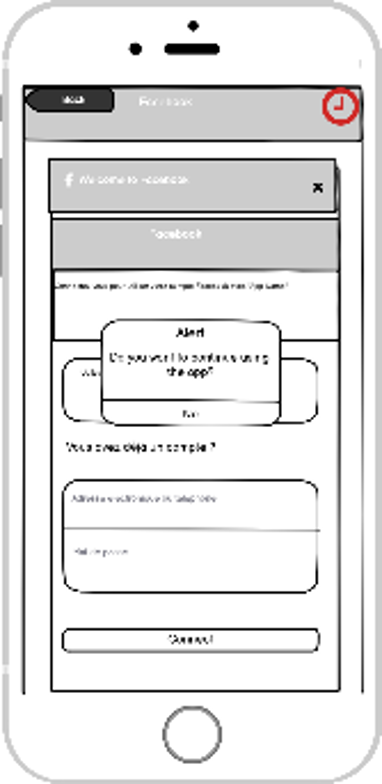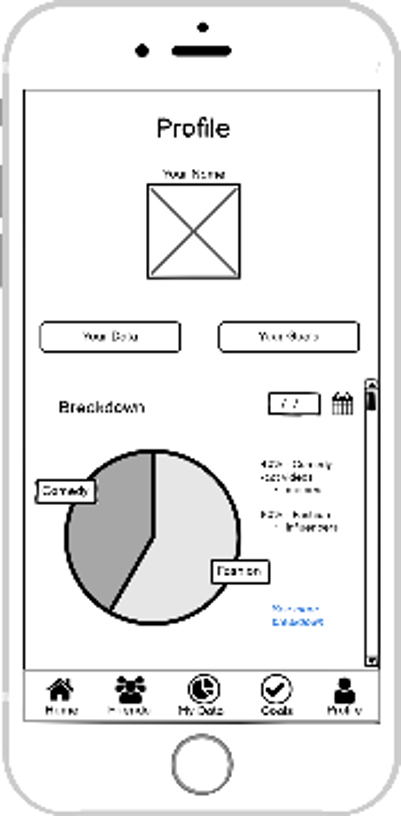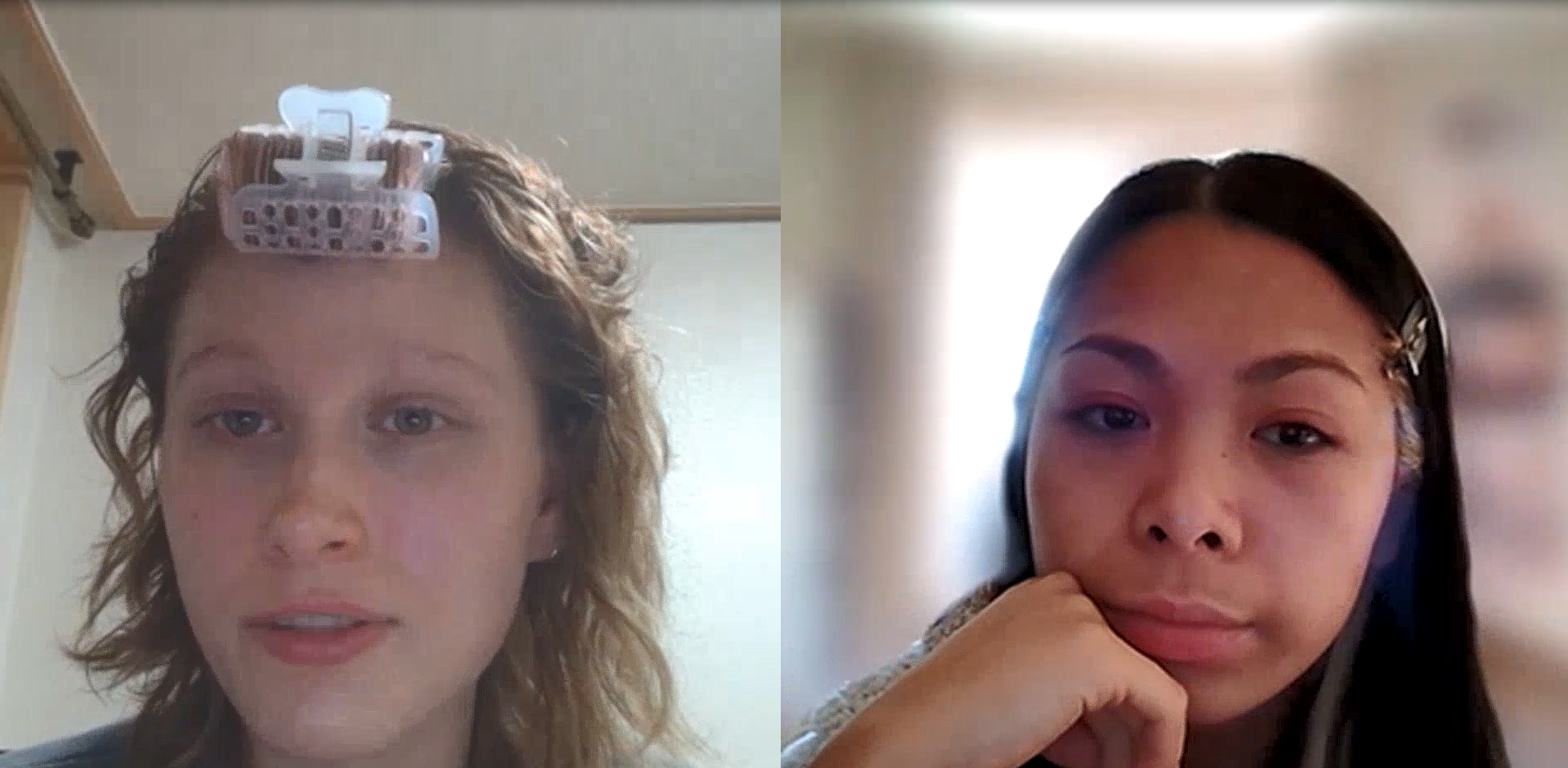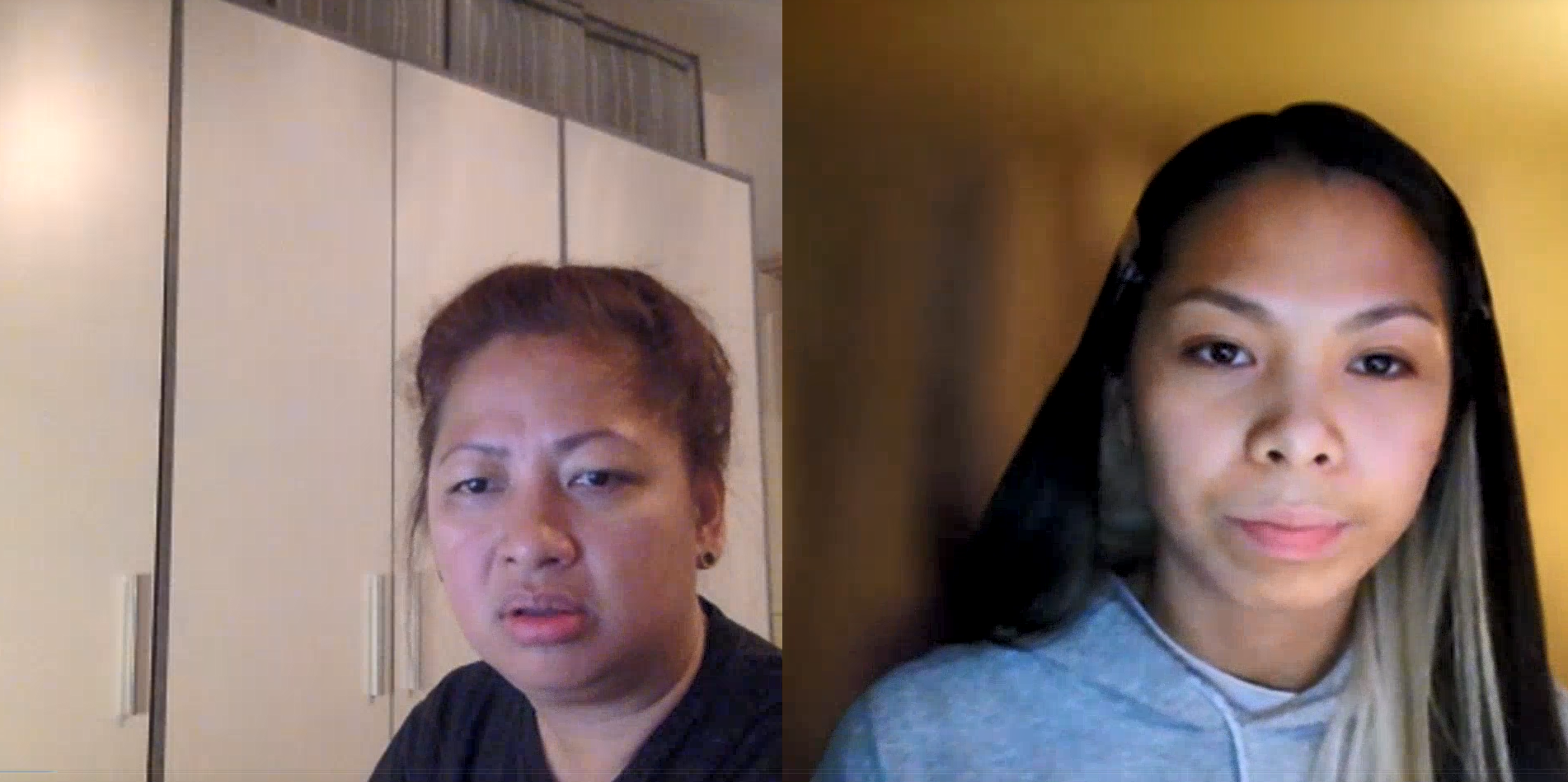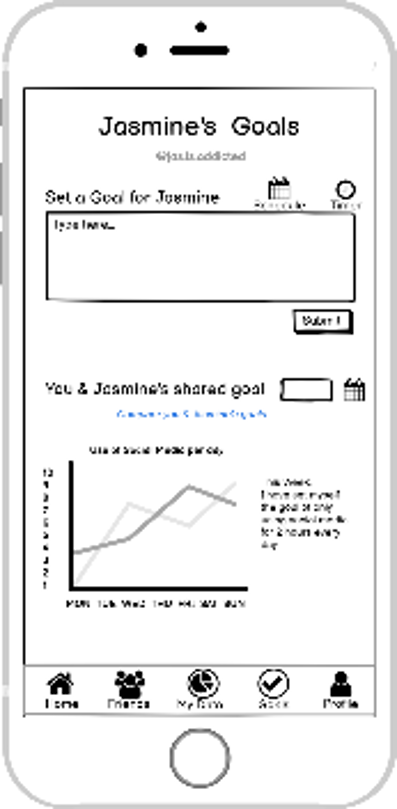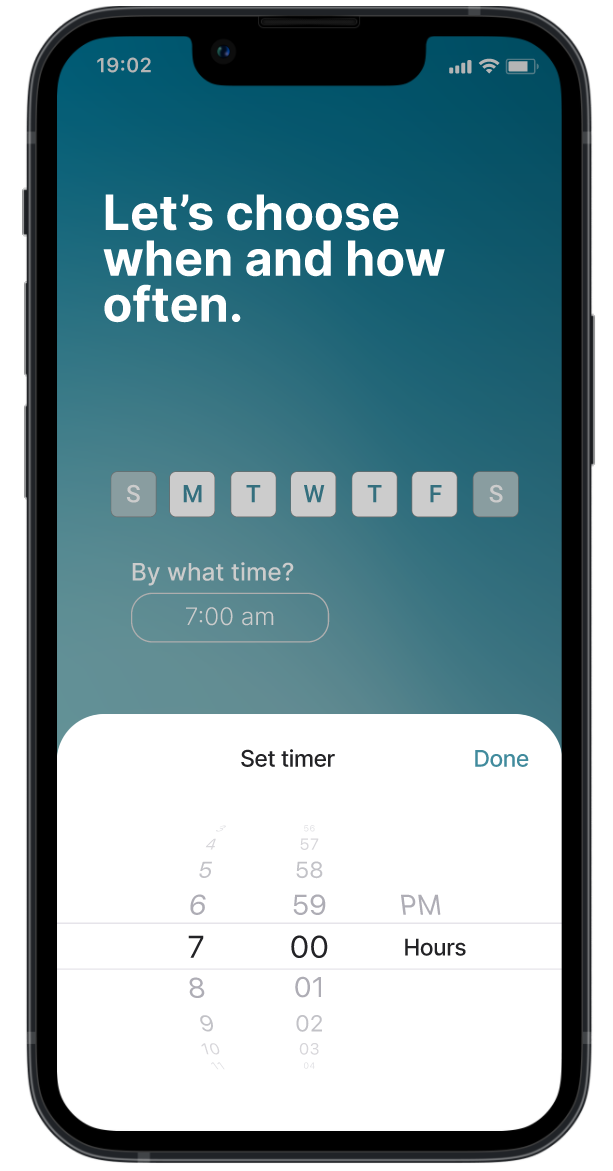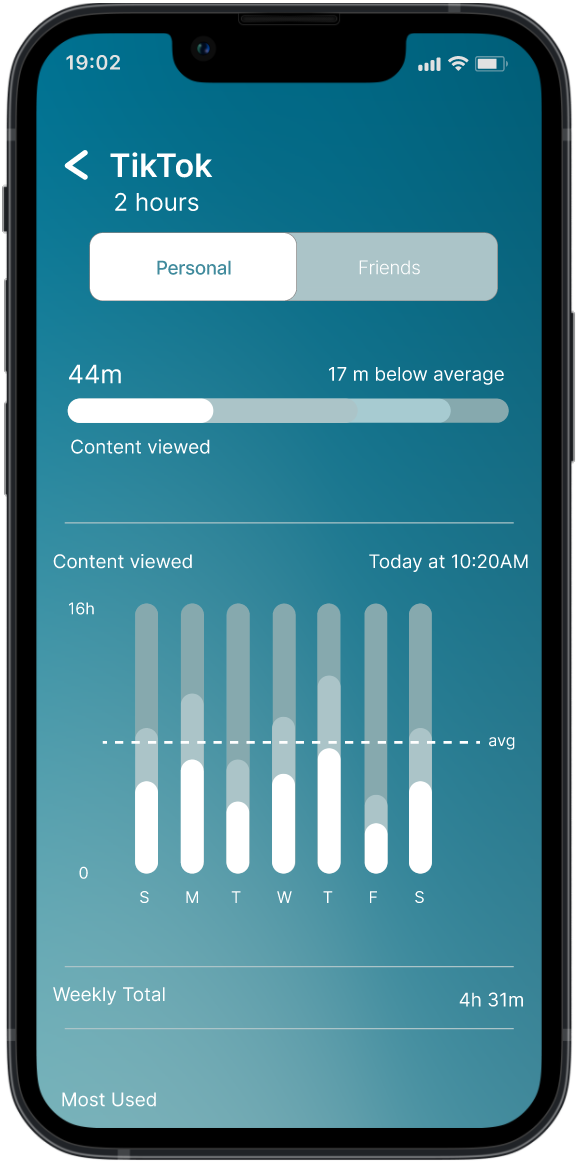Timeline: 4 months
My Role: Solo personal project
Problem
Younger generations are becoming increasingly addicted to social media
As a gen-z, I’ve noticed how many of my peers would be able to find useful information and can easily reach out to people online. However, they complain about spending too much time on social platforms to the extent where it is unhealthy for their mental wellbeing. This sparked the question-
Would we be able to use social media in a healthier way?
Solution
Review & engage together
Review graphs at the end of the week to see how everyone has done
Seeing how well each person has done makes people want to do better next time
Stay accountable in the accountability feed
Manage your goals
Track, manage and execute all goals immediately
Instant scheduale depending on the day
Customise & set different partners for each goal
Hold each other accountable
Having accountability partners
Growth in chances of success up to 95%*
Creates intrinsic motivation
Avoid social consequences of not completing goals
*according to the American Society of training and development
Landscape Research
I began to draw from research articles on the topic of goals, motivation, and achievement- when I stumbled upon an eye-opening statistic from the American Society of Training and Development:
“..people are 65 percent likely to meet a goal after making their goal public. But their chances of success increase to 95 percent when they have a specific accountability partner to report to”
Furthermore, the competition had no accountability & wellbeing aspect.
Majority of competitors focused on one of screen time, wellbeing or child protection. While keeping the above statistic in mind, I analysed the most popular apps surrounding this goal/productivity space. I found that almost none of them had this aspect of an accountability partner to help the user achieve their goals. This then became my opportunity for the solution.
User Personas
Jamieson / 14 years old / Student
Hello I’m Jamieson! I’m 14 years old and I’m a secondary school student. When I’m on the way to school I usually go on TikTok because it’s entertaining or listen to music- or both. After school, I get home and play video games, and before I go to bed I’m on TikTok again. I don’t feel great when I look back on what I did that day because I feel like I could be doing better things with my time, like reading.
Colette / 25 years old / Teacher
Hi I’m Colette and I’m a teacher in Seoul, South Korea. I usually use TikTok and Instagram to stay informed, connect with friends / new people or be entertained. I use my phone during lunch breaks and when I get home. I try to limit my time on it by using the screen time app, but usually if I still want to go on I just take it off. Sometimes I don’t feel great after using my phone because I compare myself to my peers. If I am able to stop myself going on socials, I would have time to do more activities in my day.
Ideation
Key Screens
From the research gathered on the current landscape and users needs, motivations and behaviours, I came up with a low-fidelity prototype. I decided that the app had to consist of the following:
A scheduling system
This was so that there was a time limit on the content they could view
Set goals with friends
This was so that they could limit the content they wanted to view and complete this goal together
Comparison page
This was to encourage users to continue completing goal
Testing
My interviewees usually did not know when to stop using social apps.
Although I saw from research accountability was important, I’ve conducted interviews with 8 people who had felt like they had a period of being addicted to social media. I’ve asked them questions below to find trends on why they failed to stop using it then organised my data on excel sheets.
Research Questions
How many hours do you spend on your social apps?
when do you decide to stop using social apps?
What do you like about social media?
What do you not like about social media?
Why do you go on social apps?
How does spending time on social apps make you feel?
How do you go about finding data about how long you’ve spent online?
Is this information that you would want to know?
The Main Insight
The issue was not only the amount of time they felt were wasted online, but the way the content viewed made them feel.
Based on the trends of answers received from people that I tested on, my target audience were motivated to use social platforms for fun, however, their main pain point was the feelings felt after using it. Furthermore, they lacked the need to stay offline as there was no one to hold them accountable to stop using apps.
Theme 1: Community
When surrounded by others who have the same goal as them, we are more likely to stay motivated
Concerned about the image we put across to others
Working alone causes more chance for distraction and procrastination
Theme 2: Motivation
People are not motivated by pleasure but running away from pain
External circumstances lead to internal motivation
When prompted with a deadline, the sense of urgency causes focus and dedication to complete tasks
Theme 3: Performance
My interviewees overestimate their abilities to stay off of social media, especially when it is a habit
Taking themselves off social media once on was a much harder for interviewees than staying in the rhythm of a task
My interviewees will do the least amount of work possible to consider a task done
Setbacks
After testing the low-fidelity prototype, I felt that it was difficult to get past a few issues that arose-
Data Sharing- how much would we want to share with a friend?
I found that some users were uncomfortable with sharing the extent of what they were viewing online with friends. Thus, in order to counteract this, I decided that the only data that friends can view is data that is specific to the goal.
Content Viewing - Realistically, how would we be able to track this?
The low-fidelity prototype was all about tracking content viewed on a social media platform, but it would be difficult for a bot to accurately receive data on what the user is viewing. Therefore, I decided that when a user and friend is setting goals, they would attribute the social media platform to content that they both regularly view on the platform and set a time limit for the app.
Improvements
Major improvements in design included…
Making the scheduling system more intuitive
Users seemed confused by the scheduling system and comment section when deciding their goals
Instead of timers its pop up notifications and people taking accountability with a feedback page
Switching from comparison page to broadcast feed
Originally designed accountability messenger
Based on feedback, social media feeds encourage better behaviour as appears more public than a private chat
Allows instant gratification of likes and comments to encourage use
Removal of bottom navigation
At first, I had created a bottom navigation tab to allow ease of adaption for the user
By changing to a single flow app allowed user to naturally flow to other parts of the app seemed like a better fit
The Final Screens
Results & Takeaways
This was my first UX project! 🎉✨ I’m extremely grateful that I had a mentor that guided me through the process so that I could experience building a project from the ground up. On that note, here are things I’ve learned:
Iterate, iterate, iterate!
Initially, I explored many different options to try finding the right solution for my users- I’ve ended up rethinking my project multiple times with many iterations on FIGMA, ensuring all aspects of the app was designed with intention. Not to mention- I have a better sense to obey WCAG standards next time!
Lead by insights- not processes.
Although I research and developed intensely over a few weeks, my initial version of the case study was full of unnecessary text instead of looking at the bigger picture. Going forward, I will focus more on insights as this will improve my storytelling abilities to others.
Focus on trade-offs with each change
In future, I want to be more concise in communicating trade-offs with the user in mind so I can better articulate my design decisions to stakeholders.
Don’t think of it as failing- think of it as many ways that didn’t work.
From noticing mistakes in my UI to uncovering more foundational UX problems in my app, I’m thankful to have constantly asked for feedback from my mentor. In the end, I pushed to have the app as best I could, and did not let my own thinking stop me from questioning if my own decisions were truly best for the user.
For more work inquiries, or if you want to chat,
email me at jasmindelac@gmail.com ☕️✨
Thank you for reading!
More projects

